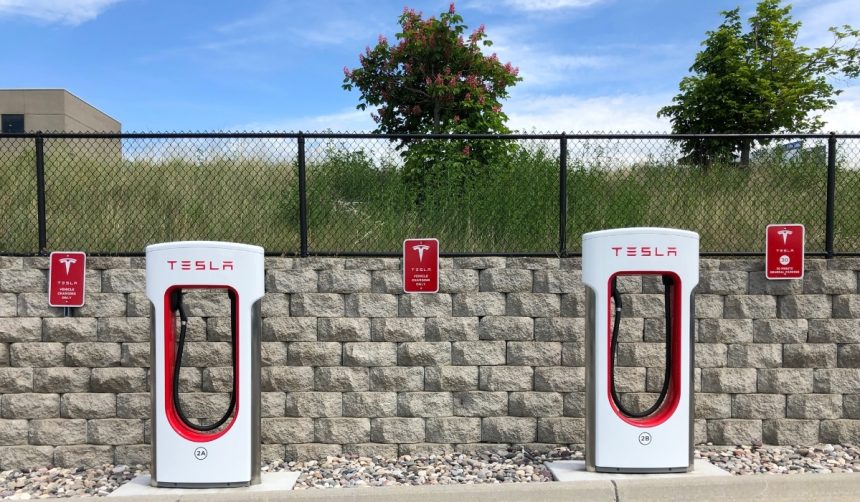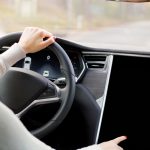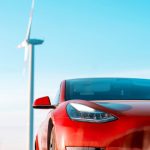A dramatic incident unfolded on an Oklahoma highway on October 23 when a small, military aircraft lost power and crash-landed, narrowly missing several vehicles, including a Tesla. Dashcam footage from the Tesla revealed a swift, evasive maneuver as the car swerved to avoid the falling OA-1K Skyraider II from the Oklahoma National Guard. Both plane crew members escaped uninjured, highlighting the layer of dangers that sudden emergencies can create on everyday roadways. The event has since sparked a conversation about the role of Tesla’s automated driving systems in real-world crisis scenarios, with many questioning whether the car’s Full Self-Driving (FSD) feature was responsible for the successful avoidance. Eyewitnesses and viewers described the event as almost surreal, reflecting how unexpected hazards can emerge even in the most routine environments.
Earlier incidents involving Tesla vehicles and their automated features often revolved around more typical road hazards or misunderstandings with traffic controls, rather than rare emergencies like low-flying or crashing planes. While videos of Teslas avoiding animals or sudden obstacles have circulated before, this event marks a sharp contrast in both severity and unpredictability. Official statements after previous incidents usually clarified the involvement of FSD, but in this situation, public debate continues about whether it was the technology or the driver’s instinct that prevented disaster. In comparison to earlier news coverage, past Tesla dashcam events rarely captured such convergence of aviation and road safety risks.
Did Tesla’s Full Self-Driving System Steer the Car Away?
The debate over the Tesla’s Full Self-Driving system’s involvement remains unresolved. David Bellow, who posted the dashcam video on social media, pointed to FSD as the driving force behind the car’s response but clarified he did not witness the event firsthand. He emphasized the vehicle’s sudden evasive action and immediate return to lane, suggesting FSD may have enabled the smooth recovery. As speculation spread online, the lack of direct confirmation from Tesla, the owner, or the driver left room for doubt.
What Do the Video and On-Screen Clues Suggest?
Analysts and enthusiasts noted the activation of the “Jump to Event” button shown in the video. This feature typically appears when significant incidents or driver interventions occur during FSD operation. The vehicle’s movement — a sharp swerve followed by stable driving — aligns with how automated systems process sudden threats. However, the video does not provide conclusive evidence. As Bellow put it,
“This wasn’t me my friend sent me the video from Matthew Topchian it was his Tesla. I’ll see if my friend can reach out and get more details of what fsd version!”
The ambiguity around who or what controlled the maneuver underscores the complexities in analyzing such incidents.
How Are Companies and Witnesses Reflecting on the Event?
No official comments have emerged from Tesla or the Oklahoma National Guard. Nonetheless, online reactions have provided a spectrum of interpretations, from astonishment at the footage to detailed breakdowns of the car’s actions. The video’s viral spread, prompted by its rare subject matter, has tested public assumptions about the current capabilities and limitations of advanced driver assistance technology. Furthermore, the event has reignited conversations regarding real-world readiness for self-driving systems and the reliability of such technology under stress. In the words of the vehicle’s video poster,
“I personally had a video of my Tesla maneuvering between two bunnies at night on the road so I fully believe this to be…”
This personal anecdote reflects the community’s mix of personal experience, anecdotal evidence, and skepticism toward automated vehicle responses.
Technology’s performance under extreme and unexpected circumstances, as captured in the Oklahoma incident, continues to pose significant questions for drivers and developers alike. As the boundaries between manual driving and automation become increasingly blurred, responsibility and trust in such systems are constantly negotiated. While the footage has sparked new discussions on the progress of Tesla’s Full Self-Driving initiative, it also underscores that unpredictable events remain challenging for even the most advanced algorithms. For readers keen on vehicle safety and automation, this incident highlights the necessity for corroborative evidence before assigning credit or blame to autonomous driving features. It also reinforces the importance of vigilant observation behind the wheel, regardless of technology, especially when rare and hazardous situations arise.
- The Tesla dashcam recorded a near-miss with a crashing plane in Oklahoma.
- Speculation remains about whether Tesla’s FSD feature controlled the maneuver.
- No official confirmation from Tesla or the vehicle’s driver has surfaced yet.










